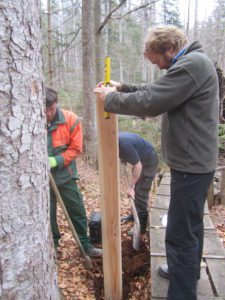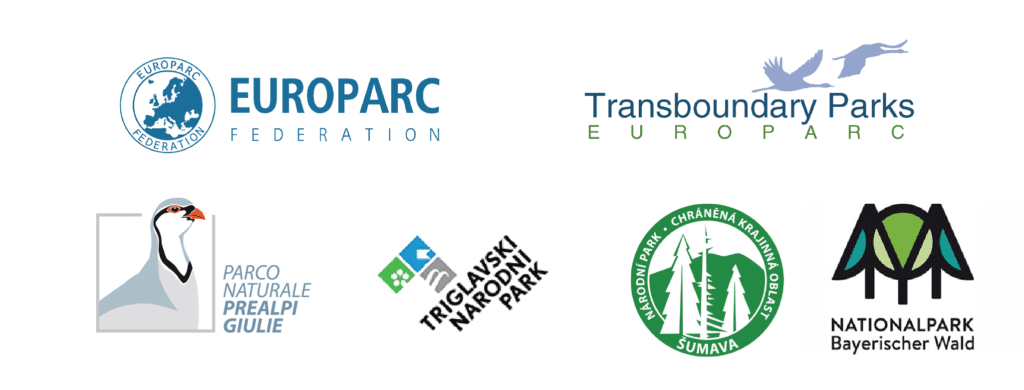Counted – asked – observed: On the tracks of national park visitors
In the Bavarian Forest National Park exist around 500 km of marked trails, but they differ extremly in intensity of use according to their destination and location. (Photo: Maria Husslein)
Article issued by Maria Husslein extracted from Protected Areas In-Sight 2016 “We are Parks”
Maria Husslein works in the administration of the Bavarian Forest National Park Administration since 2007 and is in charge of visitor management.
Large protected areas like national parks are popular destinations, welcoming every year thousands of curious visitors, families, schools and people passionate about wildlife. One of the main challenges today for the management of national parks, is making the park accessible for visitors’ recreation in accordance with the park´s main aim – leaving nature to nature.
As a fact, active, instead of reactive visitor management avoids conflicts and assures long-term satisfaction among the visitors. At the same time, active management imposes restrictions to avoid affecting ecological processes. Three years ago, we have established in the Bavarian Forest National Park a system for monitoring visitors. The first challenge was the selection of the best locations to collect data as the National Park has very many entrances. To identify them, a set of criteria was established, through the organisation of several workshops with the Park Rangers.

With the help of heat sensors, which are disguised as signposts, the number of visitors was captured on important trails over a year’s time. (Photo: ILEN/BOKU)
We installed 15 mechanical counters in 14 places during 12 days (statistically distributed over one year) and over 60 places where observers were counting visitors. Nearly 1.3 million visitors were counted during a twelve-month period and about 1,000 surveys were made at the entrances of the National Park. The results are quite interesting, and reveal the motivation of our visitors:
- Almost all respondents knew they were in a protected area.
- Around 85 % were aware of this protected area being a national park.
- Around 60% considered the status of national park a very important factor for their decision to visit the area.
- What visitors most appreciate about the national park are the “nature or untouched nature”, the “serenity”, the “hiking paths” and the “signposting” (in the form, there were no predefined answers).
After the 1st study, we defined 4 relevant sites for data collection. Regular repetitions of surveys will be done, to identify new trends in the composition of visitors in their perception of the national park.
Cross-border cooperation
Our neighboring Park in Czech Republic, Šumava National Park, with whom we have been collaborating since 2009 within the framework of EUROPARC’s Transboundary Parks Programme, is also aware of the importance of socioeconomic monitoring. Currently, we are looking to replicate the monitoring system in Šumava. If successful, the Czech Ministry might also replicate the process in all 4 Czech National Parks.
If compatible data were available, a sustainable, cross-border tourism strategy could make a leap forward!
___________________________________________________________________________
Join EUROPARC Webinar
On the 26th April, we will be hearing in the first person more information about the cross-border cooperation between the Bavarian Forest and Šumava National Parks, in a special webinar dedicated to visitor management in Transboundary Parks! Register today!

